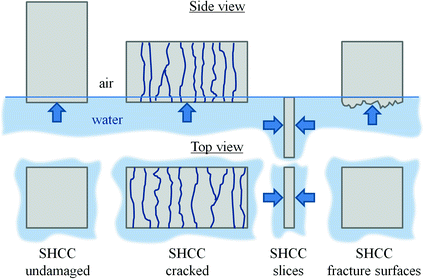Compare Anything 1.1
HTTP/2 is one of the most significant changes to how the web works since HTTP v1.1 was released in June 1999.The new HTTP/2 protocol makes web pages load significantly faster (14 percent faster if you believe our benchmarks), both on the desktop and mobile devices. Google allows users to search the Web for images, news, products, video, and other content. Therefore, 1/2 is greater than 1/4 and the answer to the question 'Is 1/2 greater than 1/4?' Which means that this equation is also true: 1/2 1/4 Note: When comparing fractions such as 1/2 and 1/4, you could also convert the fractions (if necessary) so they have the same denominator and then compare which numerator is larger. Compare anything 🛰 npm i compare-anything Compares objects and arrays and tells you which props or values are duplicates, and which are only present once. It works just like you would compare two columns in excel! But who needs excel when you've got JavaScript, am I right? 😃 Meet the family. Merge-anything 🥡 filter-anything ⚔️. Models: Does anything beat a GARCH(1,1)? Reinhard Hansen and A. A Comparison of Volatility Models: Does Anything Beat a GARCH(1,1)? Peter Reinhard Hansen. Ity models and has made it difficult to evaluate and compare the different models. Therefore the models with poor forecasting abilities have not been identified, and this may.
- Compare Anything Website
- Compare Anything 1.1 Plus
- Compare Anything 1.1 Download
- Compare Anything 1.1 2
Pixelstyle photo editor 3.6.1 download. And the Word was made flesh, and dwelt among us, (and we beheld his glory, the glory as of the only begotten of the Father,) full of grace and truth. 1 John 1:1,2 That which was from the beginning, which we have heard, which we have seen with our eyes, which we have looked upon, and our hands have handled, of the Word of life; 1 John 5:7.
וְאֵ֗לֶּה(wə·’êl·leh)
Conjunctive waw Pronoun - common plural
Strong's Hebrew 428: These, those
are the names
שְׁמוֹת֙(šə·mō·wṯ)
Noun - masculine plural construct
Strong's Hebrew 8034: A name
of the sons
בְּנֵ֣י(bə·nê)
Noun - masculine plural construct
Strong's Hebrew 1121: A son
of Israel
יִשְׂרָאֵ֔ל(yiś·rā·’êl)
Noun - proper - masculine singular
Strong's Hebrew 3478: Israel -- 'God strives', another name of Jacob and his desc
who went
הַבָּאִ֖ים(hab·bā·’îm)
Article Verb - Qal - Participle - masculine plural
Strong's Hebrew 935: To come in, come, go in, go
to Egypt
מִצְרָ֑יְמָה(miṣ·rā·yə·māh)
Noun - proper - feminine singular third person feminine singular
Strong's Hebrew 4714: Egypt -- a son of Ham, also his descendants and their country in Northwest Africa
with
אֵ֣ת(’êṯ)
Preposition
Strong's Hebrew 854: Nearness, near, with, by, at, among
Jacob,
יַעֲקֹ֔ב(ya·‘ă·qōḇ)
Noun - proper - masculine singular
Strong's Hebrew 3290: Jacob -- a son of Isaac, also his desc
each
אִ֥ישׁ(’îš)

Noun - masculine singular
Strong's Hebrew 376: A man as an individual, a male person
with his family:
וּבֵית֖וֹ(ū·ḇê·ṯōw)
Conjunctive waw Noun - masculine singular construct third person masculine singular
Strong's Hebrew 1004: A house
THE MULTIPLICATION OF THE ISRAELITES IN EGYPT, AND THEIR OPPRESSION BY A NEW KING.
(1) Now these are the names.--The divisions between the 'books 'of the Pentateuch are not arbitrary. Genesis ends naturally and Exodus begins at the point where the history of the individuals who founded the Israelite nation ceases and that of the nation itself is entered on. That history commences properly with Exodus 1:7. Exodus 1:1-6 form the connecting link between the two books, and would not have been needed unless Exodus had been introduced as a distinct work, since they are little more than a recapitulation of what had been already stated and stated more fully in Genesis. Compare Exodus 1:1-5 with Genesis 46:8-27, and Exodus 1:6 with Genesis 1:26.
Every man and his household.--'A household,' in the language of the East, includes not only children and grand-children, but retainers also--'servants born in the house'--like those of Abraham (Genesis 14:14). The number of each 'household' may thus have been very considerable.
Verse 1. - Now these are the names. Literally, 'And these are the names.' Compare Genesis 46:8, where the phrase used is the same. We have here the first example of that almost universal practice of fife writers of the Historical Scriptures to connect book with book in the closest possible way by the simple copulative 'and.' (Compare Joshua 1:1, Judges 1:1, Ruth, Samuel, Kings, Ezra, Nehemiah, and Esther.) This practice, so unlike that of secular writers, can only be explained by the instinctive feeling of all, that they were contributors to a single book, each later writer a continuator of the narrative placed on record by his predecessor. In the Pentateuch, if we admit a single author, the initial vau will be less remarkable, since it will merely serve to join together the different sections of a single treatise. Which came into Egypt. The next two words of the original, 'with Jacob,' belong properly to this clause. The whole verse is best translated, 'Now these are the names of the children of Israel which came into Egypt with Jacob: they came every man with his household.' So the LXX., Pagnini, Kalisch, Geddes, Boothroyd, etc. Every man and his household. This is important in connection with the vexed question of the possible increase of the original band of so-called 'Israelites' within the space of 430 years to such a number as is said to have quitted Egypt with Moses (Exodus 12:37). The 'household' of Abraham comprised 318 adult males (Genesis 14:14). The 'households' of Jacob, his eleven sons, and his numerous grown-up grandsons, have been with reason estimated at 'several thousands.' (Kurtz, 'History of the Old Covenant,' vol. 2 p. 149, E. T.) ChildrenEgyptFamilyHouseholdIsraelJacobNames
Exodus 1:1 NLT
Exodus 1:1 ESV
Exodus 1:1 NASB
Exodus 1:1 KJV
Compare Anything Website
Exodus 1:1 Bible Apps
Exodus 1:1 Biblia Paralela
Exodus 1:1 Chinese Bible
Exodus 1:1 French Bible
Exodus 1:1 German Bible
Compare Anything 1.1 Plus
Alphabetical: are came each Egypt family his household Israel Jacob names Now of one sons the These they to went who withOT Law: Exodus 1:1 Now these are the names (Exo. Ex) Christian Bible Study Resources, Dictionary, Concordance and Search ToolsAnswer 1:
Compare Anything 1.1 Download
This is an excellent question! There are lots of different ways to think about it, but here's one: let's go back and think about what a power means. When we raise a number to the nth power, that really means that we multiply that number by itself n times, so for example, 22 = 2*2 = 4, 23 = 2*2*2 = 8, 34 = 3*3*3*3 = 81, and so on. So when we raise a number to the zeroth power, that means we multiply the number by itself zero times - but that means we're not multiplying anything at all! What does that mean? Well, let's go even farther back to the simplest case: addition. What happens when we add no numbers at all? Well, we'd expect to get zero, because we're not adding anything at all. But zero is a very special number in addition: it's called the additive identity, because it's the only number which you can add to any other number and leave the other number the same. In short, 0 is the only number such that for any number x, x + 0 = x. So, by this reasoning, it makes sense that if adding no numbers at all gives back the additive identity, multiplying no numbers at all should give the multiplicative identity. Now, what's the multiplicative identity? Well, it's the only number which can be multiplied by any other number without changing that other number. In short, the multiplicative identity is the number 1, because for any other number x, 1*x = x. So, the reason that any number to the zero power is one is because any number to the zero power is just the product of no numbers at all, which is the multiplicative identity, 1.
The experimental data from a fatigue crack in a girth weld suggests a value of e = 6 velocity heads per mm of crack flow path. For SCC crack growth, a value of e = 3 velocity heads per mm of flow path is appropriate. G ¯ is the mean value of mass flux given by: (15) G ¯ = A o G o + A c G c A o + A c. Pipe Flow Expert Crack. Pipe Flow Expert Crack is a premier software program for piping design and pipe system modeling. It calculates fluid flow in open or closed-loop pipe networks with multiple supply & discharge tanks, multiple pumps in series or in parallel, and multiple pipe sizes & fittings. It will calculate the flow rate in each pipe & it will calculate pipe pressure drop throughout. 